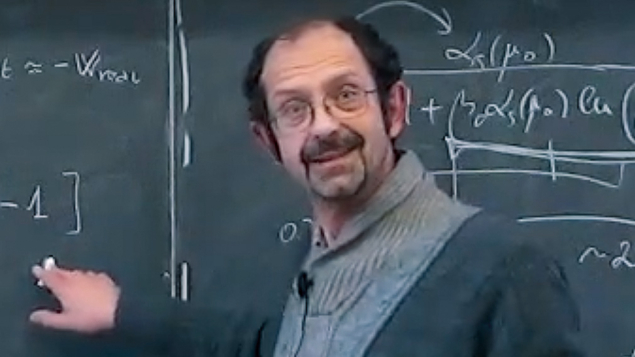
Stefano Catani, a theoretical particle physicist in the Florence section of Istituto Nazionale di Fisica Nucleare (INFN), passed away on 16 January 2024. Stefano was one of the world’s leading experts in quantum chromodynamics (QCD) and its phenomenological application to high-energy collider physics, leaving an irreplaceable void among his colleagues, friends and family.
Stefano studied physics at the University of Florence and obtained his PhD in 1987 under the supervision of Marcello Ciafaloni, who passed away in September 2023. He was a postdoctoral fellow at the University of Cambridge from 1989 to 1991, and a member of CERN’s theory division from 1991 to 1993. After 1993 he developed his scientific career at INFN Florence, with a period as a CERN staff member between 1997 and 2002.
Discussing physics with Stefano was a fantastic experience. His depth and vision were simply unique. He was one of the great pioneers in the development of QCD as a precision science, thanks to his extraordinary ability to embrace the entire field without interruption, from the physics of “soft” gluons and their resummation to the perturbative regime. His research achievements are internationally recognised as being fundamental to the success of the high-energy collider physics programme, in particular for precision studies of the Higgs boson and the top quark.
His work is recognised as fundamental to the success of the high-energy collider physics programme
Among his most important contributions are the formulation of jet clustering algorithms at lepton and hadron colliders (a key component of most experimental analyses), a general expression for the determination of the infrared singularities of scattering amplitudes (the so-called Catani formula), the design of general algorithms for the perturbative calculation of cross sections and differential observables, which have become a standard in the community (the well-known Catani–Seymour dipole subtraction and the qT subtraction schemes), and the innovative Catani–Krauss–Kuhn–Webber algorithm for Monte Carlo simulations of many-jet processes.
Stefano’s work was especially motivated by the application of QCD to collider data. He was convinced that our understanding of QCD singularities could be formulated in a way that any user could make a next-to-leading-order calculation of any suitable observable, not just dedicated calculations by experts. He also studied factorisation properties and coherence effects in the high-energy limit (the Catani–Ciafaloni–Fiorani–Marchesini equation) and proposed a generalisation of collinear factorisation that accounts for potential factorisation breaking effects at very high perturbative orders. The countless messages received from collaborators and colleagues all over the world, affected by the premature loss of a dear friend and extraordinary colleague, highlight Stefano’s great qualities of generosity, human warmth and scientific rigour that will be sorely missed by all.








